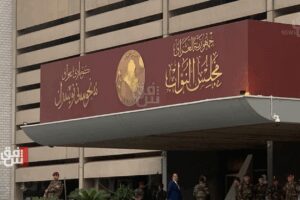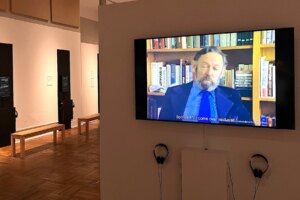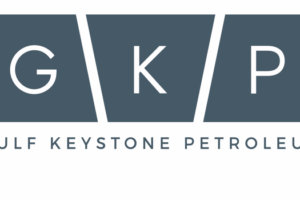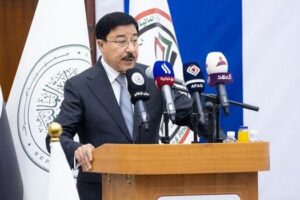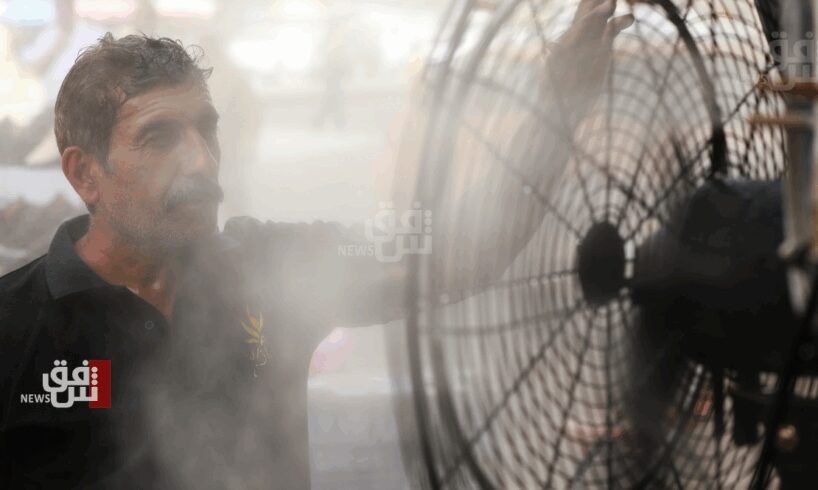
Shafaq News
Iraq is entering an era of dangerous
heat extremes, with summer temperatures regularly soaring beyond 50°C. While
global climate change is a major factor, experts increasingly point to the
environmental legacy of decades of war as a critical driver of this crisis.
Armed conflict has left behind
scorched landscapes, toxic emissions, and destroyed ecosystems. From the
Iran-Iraq War to the Gulf conflicts and the fight against ISIS, each wave of
violence has released massive quantities of greenhouse gases, degraded natural
cooling systems, and dismantled vital infrastructure.
These war-driven changes have
reshaped Iraq’s environment, making it more vulnerable to extreme heat,
drought, and accelerating desertification.
War as a Driving Force
Radiation and pollution expert Iqbal
Latif explained to Shafaq News that the use of depleted uranium in military
munitions has triggered acute climatic disturbances. “The detonation of these
munitions generates heat as high as 10,000°C, forming dense clouds that block
sunlight,” she noted. “When these clouds mix with carbon and sulfur oxides, the
resulting gases rise to the upper atmosphere, trapping heat and intensifying
long-term global warming.”
Referencing data from the
International Atomic Energy Agency, Latif pointed out that US military
operations have accounted for approximately 5.8% of global emissions at their
peak, contributing an estimated 60 million tons of carbon annually—further
accelerating atmospheric warming and ozone depletion.
She noted that since 1991, Iraq has
witnessed abnormal temperature rises. In provinces such as Basra, Dhi Qar, and
Muthanna, residents began using air conditioning for the first time, after
having previously lived in relatively temperate climates.
Earlier this year, Deputy Minister
of Environment Jassim al-Falahi revealed that Iraq’s temperatures have risen by
4–5°C above historical averages over the past 50 years—well above the global
average increase over the same period.
Supporting this observation, data
from the World Resources Institute shows that the destruction of infrastructure
during conflict—particularly oil wells and refineries—has become a measurable
contributor to Iraq’s emissions. Post-conflict air quality monitoring in areas
such as Qayyarah and Al-Baiji has detected long-term traces of hydrocarbons,
heavy metals, and lingering thermal radiation zones.
Fires of War
The widespread combustion of
hydrocarbons from bombed oil wells, refineries, and storage facilities releases
vast quantities of carbon dioxide (CO₂), black carbon, volatile organic
compounds, and other greenhouse gases into the atmosphere.
Black carbon—commonly known as
soot—is particularly harmful. It absorbs solar radiation and warms the
atmosphere up to a million times more effectively per particle than CO₂ over
short periods.
During the 1991 Gulf War, nearly 700
Kuwaiti oil wells were set alight by retreating Iraqi forces, producing an
estimated 1.5 million tons of CO₂ per day at the peak of the fires.
The resulting soot and aerosols
drifted into southern Iraq and beyond, darkening skies, disrupting
precipitation patterns, and polluting soil and water. This dense pollution
layer also limited surface evaporation and photosynthesis, contributing to
prolonged drying and vegetation loss in southern Iraq.
More recently, during battles
against ISIS, the bombing and burning of oil facilities in Mosul, Al-Baiji, and
Qayyarah released additional emissions, including sulfur dioxide (SO₂) and
nitrogen oxides (NOx). These chemicals react with atmospheric moisture to form
acid rain, which degrades soil quality and reduces its ability to retain
water—further intensifying drought conditions.
In Nineveh and Saladdin, satellite
imagery from the United Nations Environment Programme (UNEP) documented drastic
changes in soil reflectivity (albedo) after widespread fires. The now-darkened
ground surfaces absorb more solar radiation, significantly raising land surface
temperatures.
Beyond fire damage, the loss of
forests, farmlands, and marshes has stripped Iraq of crucial natural carbon
sinks and exposed topsoil to erosion and moisture loss. Vegetation plays a
vital role in cooling land surfaces through evapotranspiration—a process that
transfers heat into the atmosphere. Its absence not only accelerates
desertification, but also worsens the urban heat island effect, pushing local
surface temperatures even higher.
Seeds of Decay
Haider Rashaad al-Rubaie, head of
the Epoch for Relief and Sustainable Development organization, emphasized that
wars have been a primary factor behind the degradation of Iraq’s vegetation,
particularly in the south.
“Basra once had more than 10
million palm trees before the Iran-Iraq war,” he noted, stressing that “Today,
fewer than one million remain.” He also pointed to widespread land mines and
unexploded ordnance that have driven farmers off their land, worsening
desertification and contributing to rising temperatures.
Military detonations and oil fires,
he added, emit large amounts of carbon and greenhouse gases, which induce
lasting climate shifts. “The explosions and oil well fires release pollutants
that drive global warming—one of the most significant contributors to Iraq’s
rising heat levels.”
Meanwhile, academic environmental
researcher Shukri al-Hassan offered a broader perspective, noting that heat
increases cannot be attributed solely to warfare.
“Multiple climate variables are
involved,” he explained. “These include atmospheric pressure, wind direction,
soil composition, seasonal planetary motion, drought, and vegetation loss.”
Even so, he acknowledged the
extensive environmental damage caused by war. Iraq’s green cover has been
decimated, while vast amounts of pollutants—including radioactive uranium and
toxic gases—have entered the ecosystem, compounding the effects of global
warming.
The rise in extreme temperatures is
no longer a seasonal irregularity—it has evolved into a mounting public health
emergency. Iraq has experienced higher rates of cholera, skin diseases, and
heatstroke. Government authorities have repeatedly suspended official working
hours during the hottest months, particularly when temperatures exceeded 50°C,
underscoring the impact on public health, daily life, and the broader economy.
Written and edited by Shafaq News
staff.
